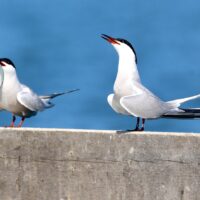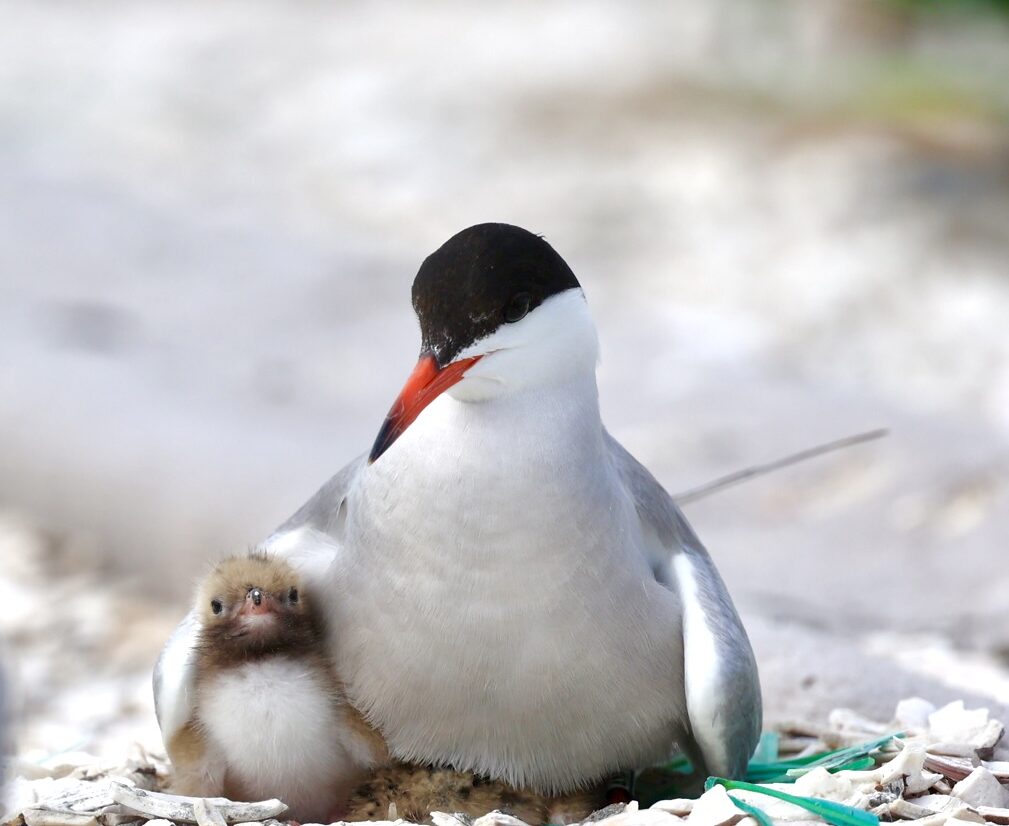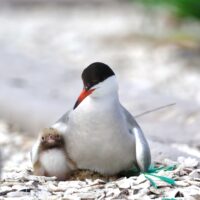In 1991, 1268 pairs of Common Tern bred in Maryland’s coastal bays; by 2020, this population segment had declined to less than 35 pairs and is now a state-listed endangered species. The decline is the result of habitat deterioration as sea-level rise accelerates island erosion and loss. In 2021, a 1024-square-foot floating-island raft was constructed and deployed to provide critically needed breeding habitat for the terns. The raft was enlarged to its permanent size (2304 square feet) in 2022. Please join Kim Abplanalp as she shares the scientific process to restore this important species back to its historical levels by creating and monitoring innovative breeding habitat.
Kim is the Bird Habitat Coordinator for Maryland Coastal Bays Program and lead researcher on the Common Tern Raft project, an artificial breeding island in the middle of the Chincoteague Bay in Maryland waters. A cooperative effort of the Maryland Coastal Bays Program, The Department of Natural Resources, and Audubon Mid-Atlantic, her duties in part are helping to monitor, maintain, and respond to the growth of the raft and make adaptations, as well as banding both adults and chicks for tracking the colony. The raft’s success has drawn requests for her to speak at scientific meetings on both the Atlantic and Pacific coasts, as sea level rise and other impacts are destroying habitat, demanding more adaptations by scientists to help birds all over the world.



